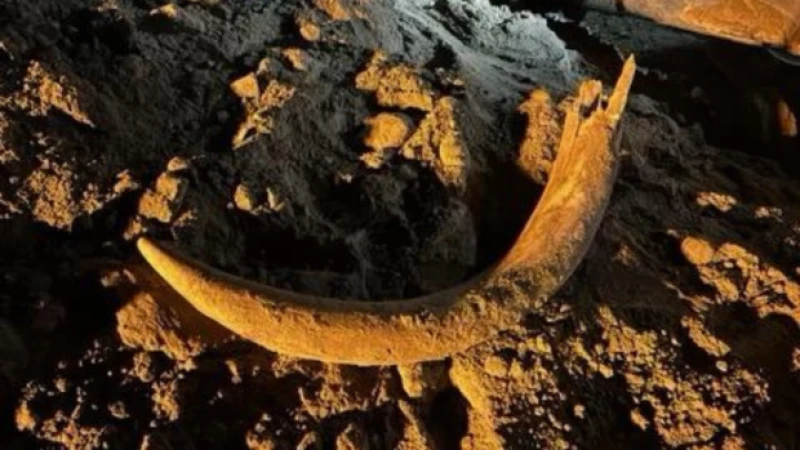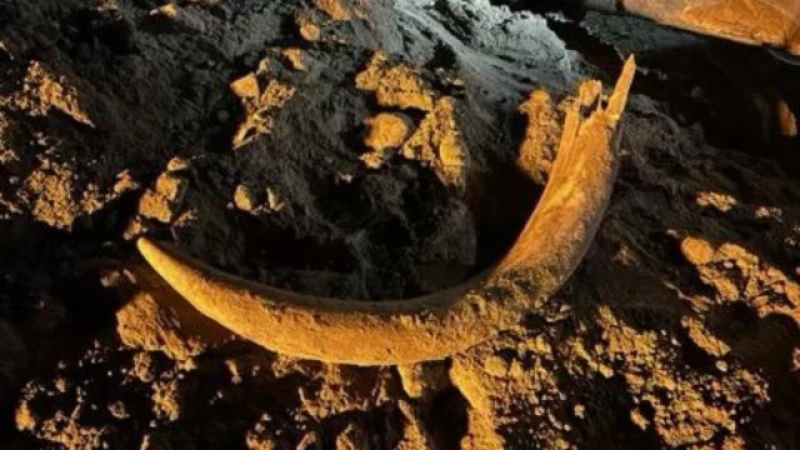Mammoth Skeleton Uncovered in North Dakota
A team in North Dakota made an exciting discovery after coal miners found a well-preserved, 7-foot-long tusk. The miners at the Freedom Mine stumbled upon the tusk over Memorial Day weekend and immediately reported it to the authorities. Representatives from the North Dakota Geological Survey, the State Historical Society of North Dakota, and the Bureau of Land Management quickly arrived at the site to assess the situation.
After careful examination, a team of paleontologists from the North Dakota Geological Survey embarked on a 12-day excavation of an old streambed. Their efforts paid off as they uncovered more than 20 bones from a mammoth skeleton. This is a significant find as most mammoth fossils found in North Dakota are isolated bones and teeth. Clint Boyd, the senior paleontologist at the North Dakota Geological Survey, described it as one of the most complete mammoth skeletons ever discovered in the state.

The excavation yielded ribs, a shoulder blade, a tooth, and parts of the hips. To ensure their preservation, the bones were carefully stabilized in protective plaster jackets. They have now been transported to the North Dakota Heritage Center & State Museum paleontology lab in Bismarck. At the lab, the bones will undergo meticulous cleaning and stabilization to prepare them for further study and display.
State officials are currently working on finding a suitable location to display the remains of a mammoth found in North Dakota. The goal is to make the specimen accessible to as many people as possible, allowing them to learn about life in North Dakota during the Ice Age.
North Dakota was home to various types of mammoths during the Ice Age, including the woolly mammoth and the Columbian mammoth. Once the remains have been fully cleaned, paleontologists will be able to determine which type of mammoth bones were discovered.
Mammoths became extinct around 10,000 years ago at the end of the Ice Age. The woolly mammoth is more closely related to the modern African elephant, while the Columbian mammoth is more closely related to Asian elephants. Both male and female mammoths had long, curved tusks.







